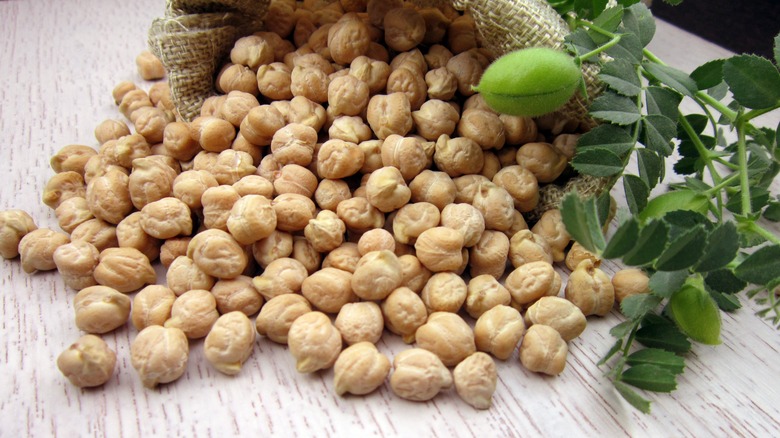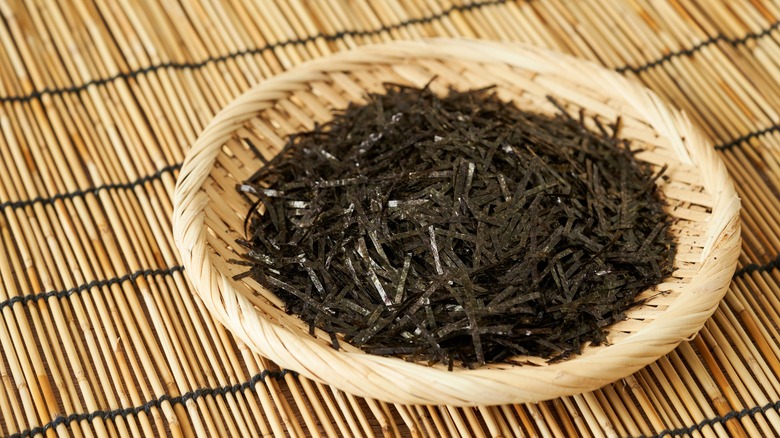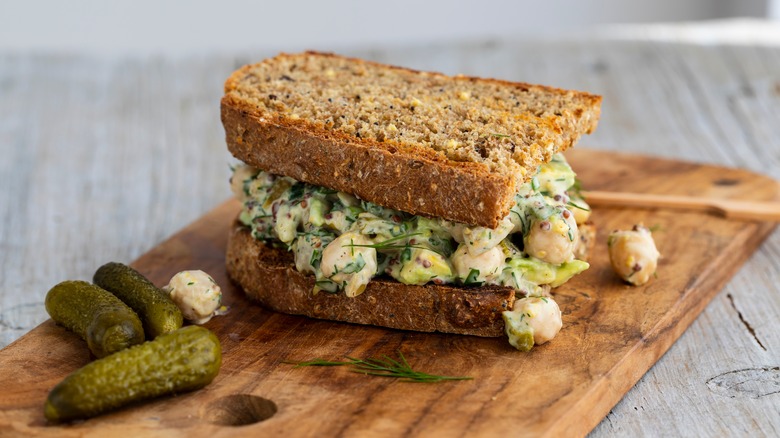Chickpeas Are Your Go-To For A Tasty Plant-Based 'Tuna' Salad
Tuna salad sandwiches are a lunchbox classic. Creamy, comforting, inexpensive, and easy to make, it's a perfect handheld meal that provides plenty of protein to keep you going throughout the day. But if you can't have this type of seafood staple or are simply trying to eat a more plant-based diet, that doesn't have to stop you from enjoying its delicious flavors. There's an easy substitute that provides a protein punch and approximates the texture of tuna fairly well — chickpeas.
Though these legumes won't be a one-to-one substitute for the exact texture of this type of fish, you can get something pretty close if you mash them up a little with a fork. The chickpeas split and mush down into a mouthfeel that's similar to the flaky consistency of canned tuna. Mix it all together with your usual sandwich ingredients — dressing, seasonings, and a little bit of crunch — and you won't even miss the seafood.
Add some extras for that classic tuna taste
While you can approximate the texture of tuna with chickpeas fairly easily, getting that same flavor to come through isn't quite as simple. This type of fish has a distinctive and salty taste, while chickpeas are much more mild. If you're set on making your garbanzo bean salad as tuna-adjacent as possible, there are a few ways to infuse a little seafood brine into the dish.
A little nori, for example, can provide a bit of ocean salinity. Nori is essentially seaweed and it provides that briny, slightly oceanic flavor while still staying plant-based and vegan. You can either crumble up large sheets of nori or use nori flakes (which typically come in a shaker) to season your chickpeas to taste. Another vegan option for imparting a hint of fishiness is capers, which add plenty of flavor when chopped up and added to the mix.
Chickpeas also provide delicious nutritional benefits
Chickpeas are often heralded for their nutritional benefits, which is part of what makes them such a favorite in plant-based cooking. Though they don't quite stack up to tuna in terms of protein content — tuna boasts 25 grams of protein per 100-gram serving, while these legumes only have about 8.8 — chickpeas still have plenty of redeeming nutritional value. According to WebMD, garbanzo beans are particularly high in fiber, which aids in digestion. This fiber is also key in reducing cholesterol, especially the type that can negatively affect arteries.
Chickpeas contain magnesium and calcium as well, two important nutrients key to strengthening and protecting bones. Just be sure to properly soak and prepare them before cooking to ensure you're getting all the nutrients possible out of them. If you're using dried legumes, you'll need to soak them overnight or boil them for a few minutes and then let them soak for an hour. Canned chickpeas might be a little more expensive, but they come pre-cooked, soft, and ready to use in an instant — so you can whip up that salad mix in a flash.


